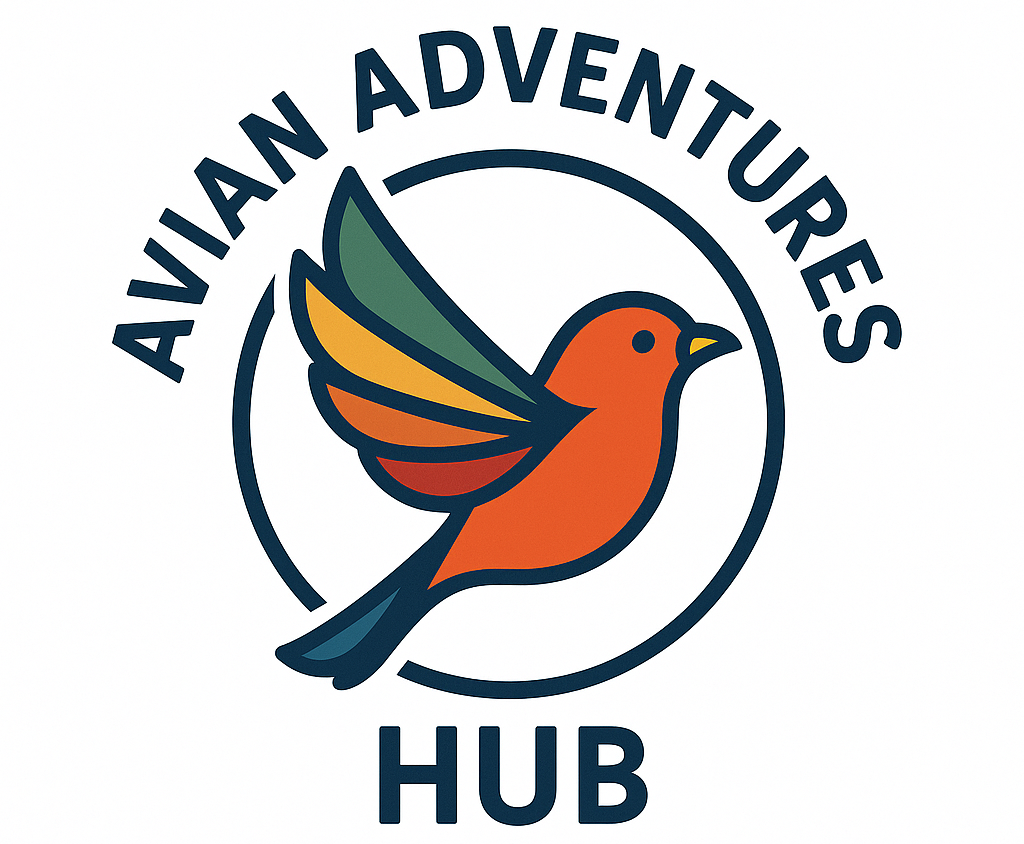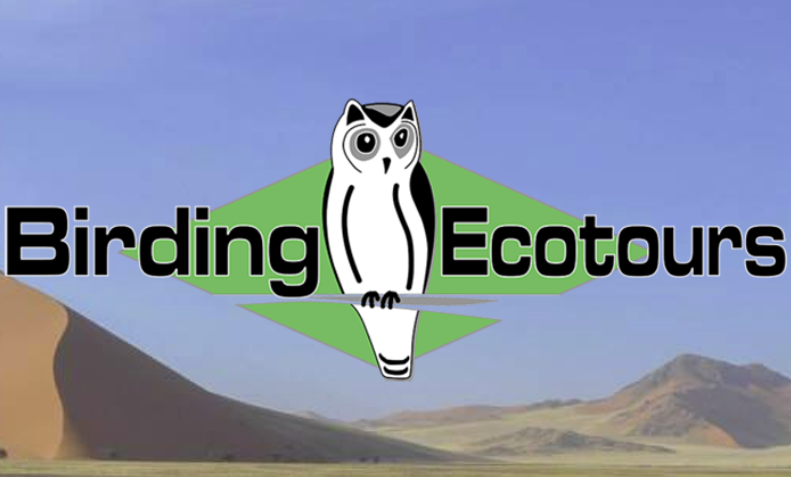1-day Garden Route Birding Tour
Click link below to learn more:
Length of trip
Description
The Garden Route is a truly special gem, offering spectacular and unique bird sightings, complimented by breath-taking scenery and phenomenal landscapes. The varied habitats encompass lush forests, fynbos, thicket and many water habitats (rivers, lakes, beautiful estuaries, ocean and spectacular beaches), as well as farmlands containing some interesting birds.
 Knysna Turaco is surprisingly common along the Garden Route.
Knysna Turaco is surprisingly common along the Garden Route.
We offer a range of birdwatching day tours around George, Wilderness, Sedgefield, Kenton-on-Sea, Knysna, Plettenberg Bay, Nature’s Valley and other famous towns of South Africa’s Garden Route. Below, we describe one of the possible, sample itineraries, but since we offer our South African birding day trips as private, custom tours, please treat this as just one example of what is on offer. While searching for the Garden Route’s special birds (such as Knysna Turaco, Knysna Warbler, Knysna Woodpecker, Half-collared Kingfisher, Narina Trogon, elusive Buff-spotted and Red-chested Flufftails and many others), you may also be lucky enough to encounter interesting mammals such as Cape Clawless Otter, and the more abundant Rock Hyrax (locally known as Dassie) At certain times of the year, Southern Right Whales can be seen remarkably close to the shore.
We are also able to take you from the Garden Route, across the Cape Fold Mountains into the Little Karoo around the historic town of Oudtshoorn, and over the remarkable Swartberg Pass into the Great Karoo. The mountains act as a rainshadow and the Karoo is an arid habitat with a completely different suite of birds, similar to what we find closer to Cape Town on our Tankwa Karoo birding tours.
A sample Garden Route, South Africa, birding tour itinerary:
After collecting you from your choice of accommodation, we will embark on a promising journey to capture the absolute best of the Plettenberg Bay area and its surrounds. Using key locations and remarkable areas of the Garden Route, our primary focus will be on sighting the exquisite bird species these locations host. Some of the most sought-after birds in this part of the world are Knysna Turaco, Knysna Woodpecker, Knysna Warbler*, Orange-breasted Sunbird, Greater Double-collared Sunbird, Narina Trogon, African Emerald Cuckoo and Klaas’s Cuckoo..
Our first stop off will be at Nature’s Valley – a beautiful town situated within the Tsitsikamma National Park. Nature’s Valley is renowned for its abundant forest bird species, namely Knysna Turaco, Greater Double-collared Sunbird, Knysna Woodpecker, Narina Trogon and Klaas’s Cuckoo (best seen in summer when calling). Further amazing highlights include Grey Cuckooshrike, Yellow-throated Woodland Warbler, Half-collared Kingfisher, African Finfoot, White-starred Robin, African Emerald Cuckoo (summer), Forest Buzzard, Lemon Dove, Chorister Robin-Chat, Scaly-throated Honeyguide, Blue-mantled Crested Flycatcher, Green-backed Camaroptera, Terrestrial Brownbul and Forest Canary. Other grand sightings are those of Olive Woodpecker, Cape Batis, Collared Sunbird, Green Wood Hoopoe, African Olive Pigeon, Red-chested Cuckoo (summer), Swee Waxbill, African Paradise Flycatcher (summer), Olive Thrush, Grey Sunbird and Tambourine Dove.
 The beautiful Chorister Robin-Chat is fairly common around Nature’s Valley.
The beautiful Chorister Robin-Chat is fairly common around Nature’s Valley.
Birding in this area proceeds along the Groot River, hosting the indigenous tree species of Outeniqua Yellowwood and Real Yellowwood (the national tree of South Africa). These trees, extremely tall in height and ancient in age, serve as a perfect setting for excellent forest birding. The ever-shy Bushbuck is also known to frequent the forest as well as striking variants of butterfly species, such as Mocker and Green-banded Swallowtails. We will then proceed to a fynbos reserve located in close proximity to Nature’s Valley. The majestic Tsitsikamma Mountain Range poses as a delightful, panoramic landscape backdrop while we enjoy the fynbos birds. This area boasts a small number of superb and must-see endemics, all sighted in and among proteas, cone bushes and ericas, to name but a few. These particular endemics are Orange-breasted Sunbird, Victorin’s Warbler, Cape Grassbird and Cape Sugarbird.
We will then drive to the stunning area of The Crags (originally named after the craggy-like mountains which tower over The Crags themselves). The Crags is rippled with prolific agricultural lands and vineyard terrains, and it is a region that prizes itself for a wealth of diverse habitat types, while the preservation of indigenous fauna and flora is paramount. It is within these habitats that the following bird species remain some of the most cherished finds: Knysna Turaco, Greater Double-collared Sunbird, Forest Buzzard, Cape Longclaw, African Jacana, White-backed Duck, Western Barn Owl, Malachite Sunbird, African Harrier-Hawk, Plain-backed Pipit, Jackal Buzzard and Hamerkop.
 Greater Double-collared Sunbird can be seen in forest-edge habitat.
Greater Double-collared Sunbird can be seen in forest-edge habitat.
The vast area of the Bitou Municipality will be our next featured stop – the term Bitou is derived from the bietou or tick berry shrub, a shrub which presents itself as radiantly yellow in color and continues to be plentiful within the Plettenberg Bay area and its surroundings. We will begin our bird sighting along the Bitou River – the river, accompanied by its wetlands, supports a fine diversity of birdlife, including waterbirds, waders and thicket-related species. Here the birds we will focus on seeing are Klaas’s Cuckoo, Blue Crane (the national bird of South Africa), Giant Kingfisher, Black Crake, Pied Kingfisher, Wood Sandpiper (summer), African Stonechat, Southern Red Bishop, African Spoonbill, Glossy Ibis, Black-winged Stilt, Pied Avocet, Yellow Bishop, African Shelduck and Greater Flamingo. Other species to view here are Black Cuckooshrike, Diederik Cuckoo (summer), Brown-hooded Kingfisher and African Hoopoe. If time permits we can then drive to the town of Wittedrift in search of further sightings of these species.
We will then visit Uplands, located slightly north of the Bitou River and situated along the Prince Alfred’s Pass – this area is a haven for grassland birding and for birds that have adapted to farmland habitats. Superb sightings here are Amur Falcon(summer), Denham’s Bustard, Cloud Cisticola, European Roller (summer), African Pipit, Zitting Cisticola, Black-headed Heron and Black-winged Kite.
 Denham’s Bustards are frequently seen striding through the grasslands near Prince Alfred Pass.
Denham’s Bustards are frequently seen striding through the grasslands near Prince Alfred Pass.
Then we will stop at Keurbooms Estuary to focus primarily on waders: Grey Plover, Eurasian Whimbrel, Common Ringed Plover (summer), Curlew Sandpiper (summer), Common Greenshank, White-fronted Plover, Common Sandpiper (summer), Bar-tailed Godwit (summer) and Terek Sandpiper (summer). The Keurbooms Estuary also serves as an important breeding ground for Kelp Gull and African Oystercatcher. Further magical sightings we may encounter are African Fish Eagle, African Marsh Harrier, Osprey, Cape Canary, Greater Crested Tern, Purple Heron, Kittlitz’s Plover, Grey Heron, Greater Striped Swallow (summer), Levaillant’s Cisticola, Lesser Flamingo and Reed Cormorant. The Keurbooms Estuary is tide-dependent, and as a result, to ensure we maximize the birding within nature’s conditions, a slight reshuffle of the itinerary order may occur on the given day.
We will then journey to the nearby Plettenberg Bay sewerage works, an ever-popular locality, enriched with and notorious for an abundance of ducks – the impressive collection of Blue-billed, Cape and Red-billed Teals, along with the distinguished Cape Shoveler, Yellow-billed Duck and White-faced Whistling Duck, forms an important part of the dynamic variety on offer here, further validating this site as a key spot to explore. Other birds to be sighted here are Little Grebe, Common Moorhen, Three-banded Plover, Blacksmith Lapwing, Streaky-headed Seedeater, White-throated Swallow (summer) and Brimstone Canary.
 African Oystercatcher can be seen feeding along the rocky coastline at Robberg Nature Reserve.
African Oystercatcher can be seen feeding along the rocky coastline at Robberg Nature Reserve.
We will then embark on a drive to Robberg Nature Reserve. Robberg (also known as ‘Seal Mountain’) is not only a nature reserve but also a national monument and World Heritage Site. Robberg is home to 5,000 Cape Fur Seals, and we have the opportunity to witness wonderful sightings of Southern Right Whale, Humpback Whale, Indian Ocean Bottlenose Dolphin and Common Dolphin. Within this awe-inspiring, untainted spot our main focus will be on fynbos birds, hopefully involving sightings of Orange-breasted Sunbird, Cape Grassbird, African Oystercatcher, Cape Siskin, Neddicky, Southern Double-collared Sunbird, Karoo Prinia, Cape Rock Thrush, Southern Tchagra and Rock Kestrel.
 Orange-breasted Sunbird can be remarkably numerous in fynbos habitat.
Orange-breasted Sunbird can be remarkably numerous in fynbos habitat.
We will then move on to the area of Kranshoek (accessible through the Harkerville Forest). This area is comprised of forest and fynbos habitats and proves to be a reliable spot to view Knysna Turaco, Greater Double-collared Sunbird, Orange-breasted Sunbird, Victorin’s Warbler, Yellow-throated Woodland Warbler, Peregrine Falcon and African Dusky Flycatcher.
We will then head to the Rietvlei Dam, which serves as a prime viewing point for four heron species as well as Pin-tailed Whydah, Speckled Mousebird, Brown-throated Martin, Little Rush Warbler, African Marsh Harrier and Lesser Swamp Warbler. After the Rietvlei Dam we will return to your initial collection point, and this will be the end of our day.
*The Knysna Warbler is best seen in early summer, when it is calling. It can be seen in Plettenberg Bay at a privately owned estate. If this sighting is highly requested, access will be arranged, and visiting this location can take preference over another previously arranged birding spot.

